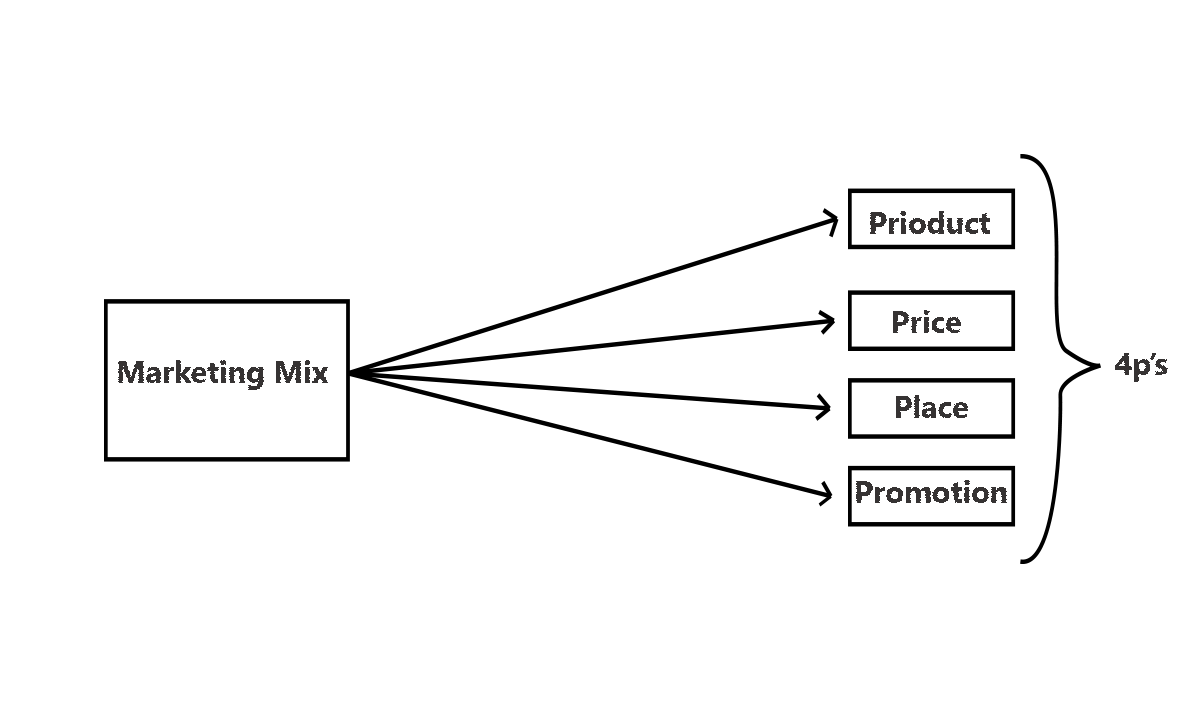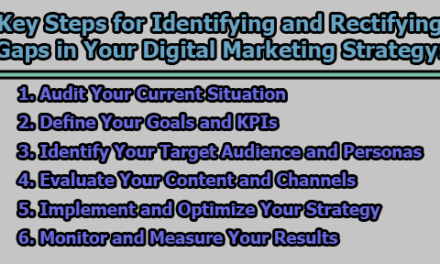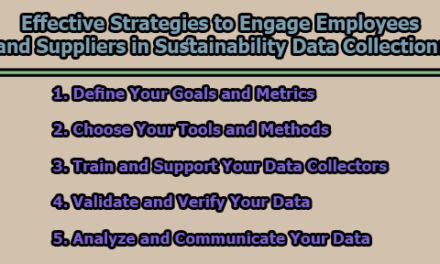Generally, marketing is the process of profit maximization, which starts before production and ends through customer satisfaction. In a simple sense, marketing is the process of transferring ownership from producer to ultimate customer or consumer. In the rest of the article, we are going to discuss the conceptual frame of marketing.
Definition of Marketing:
There are numerous definitions are being in marketing which all are not of equal importance. Some important definitions are given below:
According to Philip Kotler & Gray Armstrong, “Marketing is a social and managerial process by which individuals and groups obtained what they need and want through creating and exchanging products and value with others.”
According to W.J. Stanton, “Marketing is a total system of business activities designed to plan, price, promote and distribute, want satisfying goods and services to present and potential household customers or industrial users.”
According to Peter Drucker, “Marketing is so basic that it cannot be considered a separate function. It is the whole business seen from the point of view of its final result i.e. from the customer’s point of view.”
So, at last, it can be said that marketing is not only buying or selling but also all the tasks related to transferring ownership.
Concepts of marketing:
Step-1: Understanding the marketplace and customer Needs:
As a first step, marketers need to understand customer needs and wants and the marketplace within which they operate. The five core concepts of customer and marketplace are given below:
a. Needs, wants, and demands:
Needs: The most basic concept underlying marketing is that of human needs. Human needs are states of felt deprivation. They include basic physical needs for food, clothing, warmth, and safety; social needs for belonging and affection; and individual needs for knowledge and self-expression. These needs are created by marketers; they are a basic part of the human markup.
Wants: Wants are the form human needs take as they are shaped by culture and individual personality. An American need food but wants a mango, rice, lentils, and beans. Wants are shaped by one’s society and are described in terms of objects that will satisfy needs.
Demands: When backed by buying power, wants to become demands. Given their wants and resources, people demand products with benefits and add up to the most value and satisfaction.
b. Marketing offerings (products, services, and experiences):
Market offering: A market offering – Some combination of products, services, information, or experiences offered to a market to satisfy a need or want. Market offerings are not limited to physical products. They also include services, activities, or benefits offered for sale that are essentially intangible and do not result in the ownership of anything. Examples; banking, airlines, hotel, tax preparation, and home repair services. More broadly, market offerings also include other entities, such as persons, places, organizations, information, and ideas. For example; beyond promoting its banking services, LaSalle Bank runs ads asking people to donate used or old winter clothing to the Salvation Army. In this case “market offering” is helping to keep those who are less fortunate warm.
Marketing Myopia: Marketing is the mistake of paying more attention to the specific products company offers than to the benefits and experiences produced by these products.
c.Value and Satisfaction;
Customer Value: Customers usually face a broad array of products and services that might safety a given need. Customer value is the difference between owning and using the product and the cost of obtaining the product.
Customer satisfaction: Customer satisfaction depends on how well the product performance lives up to the customer’s expectations. A marketer must be careful to set the right level of expectations. If they set expectations too low, they may satisfy those who buy but fail to attract enough buyers. If they raise expectations too high, buyers will be disappointed.
d.Exchanges and relationships:
Exchanges: Exchange is the act of obtaining a desired object from someone by offering something in return. In the broadest sense, the marketer tries to bring about a response to some market political candidate, for instance, wants votes a church wants membership, an orchestra wants an audience, and a social action group wants idea acceptance.
Relationships: Marketing consists of taken to build and maintaining desirable exchange relationships with target audiences involving a product, service, idea, and other projects.
e.Markets: A market is the set of actual and potential buyers of a product. These buyers share a particular need or want that can be satisfied through exchange relationships.
Step-2: Designing a Customer–Driven Marketing Strategy:
Marketing Management is the art and science of choosing target markets and building profitable relationships with them. Marketing management Orientations are as follows:
- Production Concept: According to this concept it is assumed that customers will favor products that are available and highly affordable. Therefore, the company should improve production and distribution efficiency.
- Product Concept: According to this concept buyers will buy high-quality, well-performing products. ‘The product concept holds that consumers will favor products that offer the most in quality, performance and innovative’.–Philip Kotler & G. Armstrong.
- Selling Concept: According to this concept, consumers will buy those companies’ products which companies undertake large-scale promotion activities. This concept is based upon unsought goods.
- Marketing Concept: Marketing concepts that achieving organizational goals depends on knowing the needs and wants of the target market and delivering the desired satisfaction better than competitors do.
- Societal marketing concept: The societal marketing concept is the idea that the organization should determine the needs, wants, and interests of the target market and deliver the desired satisfaction more effectively and efficiently than competitors in a way that maintains or improves the consumers and social well being.
- The Holistic Marketing concept: The holistic marketing concept is based on the development, design, and implementation of the marketing program, process, and activities that recognize their breadth and independencies. Holistic marketing recognized that “everything matters” with marketing and that a broad, integrated perspective is often necessary. Four components of holistic marketing are;
- Relationship marketing
- Integrated marketing
- Internal marketing
- Socially responsible marketing
Step-3: Preparing an Integrated Marketing Plan and Program:
The company’s marketing strategy outlines which customers the company will serve and how it will create value for those customers. Next, the marketer develops an integrated marketing program that will actually deliver the intended value to the target customer. The marketing program builds customer relationships by transferring the marketing strategy into action. It consists of the firm’s marketing mix, the set of marketing tools the firm uses to implement its marketing strategy. The major marketing tools are classified into four broad groups, called the four Ps of marketing; product, price, place, and promotion. To deliver on its value proposition, the firm must first create a need-satisfying market offering (product). It must decide how much it will charge for the offer (price). Finally, it must communicate with target customers about the offer and persuade them of its merit (promotion).
Step-4: Building customer relationships:
The first three steps in the marketing process – understanding the marketplace and customer needs, designing a customer-driven marketing strategy, and constructing marketing programs – all lead up to the fourth and most important step; building profitable customer relationships.
- Customer relationship management: Customer relationship management is the overall process of building and maintaining profitable customer relationships by delivering superior customer value and satisfaction. It deals with the aspect of acquiring, keeping, and growing customers.
- Customer perceived value: The customer’s evaluation of the difference between all the benefits and all the costs of a market offering relative to those of competing offers. For example; Toyota Pirus hybrid automobile owners gain a number of benefits. The most obvious benefit is fuel efficiency. However, by purchasing a Pirus, the owners also may receive some status and image values. Driving a Pirus makes owners feel and appear more environmentally responsible. When deciding whether to purchase a Pirus, customers will weigh these and other perceived values of owing the car against the money, effort, and physical cost of acquiring it.
- Customer Satisfaction: Customer satisfaction depends on the product’s perceived performance that matches a buyer’s expectation. If the product’s performance falls short of expectations, the customer is dissatisfied. If the performance matches expectations, the customer is satisfied. If the performance exceeds expectations, the customer is highly satisfied or delighted.
Step-5: Capturing Value from Customers:
The first four steps in the marketing process involve building customer relationships by creating and delivering superior customer value. The final step involves capturing value in return. In the form of current and future sales, market share, and profits. For this, we have to know the following:
- Creating customer loyalty and retention: Good customer relationship management creates customer delight. In turn, delighted customers remain loyal and talk favorably to others about the company and its products. Studies show big differences in the loyalty of customers who are less satisfied, somewhat satisfied, and completely satisfied. The aim of customer relationship management is to create not just customer satisfaction, but customer delight. Companies are realizing that losing a customer means losing more than a single sale. For this reason, the marketer follows the customer’s lifetime value. Customer lifetime value is the value of the entire stream of purchases that a customer would make over a lifetime of patronage.
- Growing to share the customer: Beyond simply retaining good customers to capture customer lifetime value, goods customer relationship management can help marketers to increase their share of customers – the share they get of the customer’s purchasing in their product categories. Thus, banks want to increase their “share of wallet”. Supermarkets and restaurants want to get more “share of stomach”. Car companies want to increase the “share of the garage” and airlines want a greater “share of travel”.
- Building customer equity: the ultimate aim of customer relationship management is to produce high customer equity. Customer equity is the combined discounted customer lifetime values of all of the company’s current and potential customers. Clearly, the more loyal the firm’s profitability customers, the higher the firms customer equity. Customer equity may be a better measure of a firm’s performance than current sales or market share.
Functions of Marketing:
There is a raging that-‘The function of marketing starts before production and ends after consumption’. Marketing is nothing but the combination of some functions. These functions are discussed below:-
- Purchase: the first important task of marketing is to purchase. Purchase is looking for and evaluating goods and services and at last the transfer of ownership.
- Selling: Every element of marketing is related to selling especially promoting is involved with selling. The performance of marketing is considered through selling.
- Transportation: Transportation is the marketing function of moving goods. Transportation creates the demand for the place. The production and demand do not exist at the same palace so they should be combined. It is possible by transportation.
- Warehousing: Generally warehousing means storing. Warehousing creates utility of time. It removes the distance between the production period and the consumption period.
- Standardization and grading: Standardization means sorting goods according to their basic quality. Grading means classifying goods according to their standard.
- Assembling: It means, collecting goods from various production places in order to sell. Generally, it seems in various large-scale businesses.
- Packaging: For making the good transportable and longer lasting, the packaging is very much important. Nowadays packaging is one of the most important elements to draw the attention of customers.
- Advertisement: Advertisement is any paid form of non-personal presentation and promotion of ideas, goods, and services by an identified sponsor. It is the instrument to inform about new products and for increasing the sales of the old product.
- Collection of market information: After selling the product, the seller has to collect market information to existing in the market and for product development.
From the above discussion, we can say that the activities of marketing are not only bound by transfer or distribution. Deeply it is more widespread.
Scopes of marketing:
Marketing people have involved in marketing 10 types of entities: goods, services, experiences, events, persons, places, properties, organizations, information, and ideas.
- Goods: Physical goods constitute the bulk of most countries’ production and marketing efforts. Not only do companies market their goods, but thanks in part to the Internet, even individuals can effectively market goods.
- Services: As economics advances, a growing proportion of their activities is focused on the production of services. Many market offerings consist of a valuable mix of goods and services. At a fast-food restaurant, for example, the customer is both a product and service.
- Events: Marketers promote time-based events, such as major trade shows, artistic performances, and company anniversaries. Global sporting events such as the Olympics or World cup are promoted aggressively to both companies and fans.
- Experiences: By orchestrating several goods, a firm can create, stage, and market experiences. Walt Disney World’s Magic Kingdom represents experiential marketing: Customers visit a fairy kingdom, a pirate ship, or a haunted house.
- Persons: Celebrity marketing is a major business. Today, every major film star has an agent, a personal manager, and ties to a public relations agency. Artists, musicians, CEOs, physicians, high-profile lawyers and financiers, and other professionals are also getting help from celebrity marketers.
- Places: Cities, states, regions, and whole nations compete for the activity to attract tutorials, factories, company headquarters, and new residents. Place marketers include economic development specialists, real estate agents, commercial banks, local business associations, and advertising and public relations agencies.
- Properties: Properties are intangible rights of ownership of either real property (real estate) of financial property (stocks and bounds). Properties are bought and sold, and this requires marketing. Real estate agents work for property owners or sellers or buy residential or commercial real estate. Investment companies and banks are involved in marketing curies to both institutional and individual investors.
- Organizations: Organizations’ activities work to build strongly favorable, and unique images in the minds of their target public. Companies spend money on corporate identity ads with the tagline “Let’s Make Things Better.”
- Information: Information can be produced and marketed as a product. This is essentially what schools and universities produce and distribute at a price to parents, students, and communities. Encyclopedias and most nonfiction books market information. Magazines such as Road and Track and Byte supply information about the car and computer worlds, respectively.
- Ideas: Every market offering includes basic data. Charles Revlon of Revlon observed: “In the factory, we make cosmetics; in the store we sell hope.” Products and services are platforms for delivering some idea or benefits.
Marketing Mix:
The combination of 4p’s are called marketing mix. According to M.C. Cathy ae, The 4p’s are interrelated and must be balanced into one integrated whole to satisfy some target markets’ needs and references.
- Product
Product aspects of marketing deal with the specifications of the actual goods or services plus how it relates to the end users’ needs and wants. The range of a product normally includes supporting elements such as warranties, guarantees, and support. For example, a customer purchased a new Toshiba laptop from the computer shop. Once the product is purchased, the products which have been purchased will be given one-year warranties.
- Price
This refers to the process of setting a price for a product which together with discounts. The price need not be monetary but it can plainly be what is exchanged for the product or services. For example time, energy, or attention. Apart from that, Methods of setting prices optimally are in the domain of pricing art.
- Place
Place refers to how the product gets to the buyer. For instance, point-of-sale assignment or retailing. This third criterion in marketing mix refers to the channel by which a product or service is sold online or retail to which geographic region or industry and division of people who are suited to use this product. Apart from that, the place also refers to how the surroundings in which the product is sold can influence sales.
- Promotion
This includes the types of methods used in order to sell these products to customers. For example advertising, sales promotion, publicity, and individual selling. Branding refers to the assorted strategies for promoting the product, brand, or company. Promotion will be one of the more costly aspects because it involves our efforts and money in order to promote the goods and services.
References:
- Marketing Management 12e- Philip Kotler & Kevin Lane Keller
- Marketing Management 11e- Philip Kotler
- Marketing Management…… Nobi – Forid – Korim – Mahmud.

Library Lecturer at Nurul Amin Degree College










